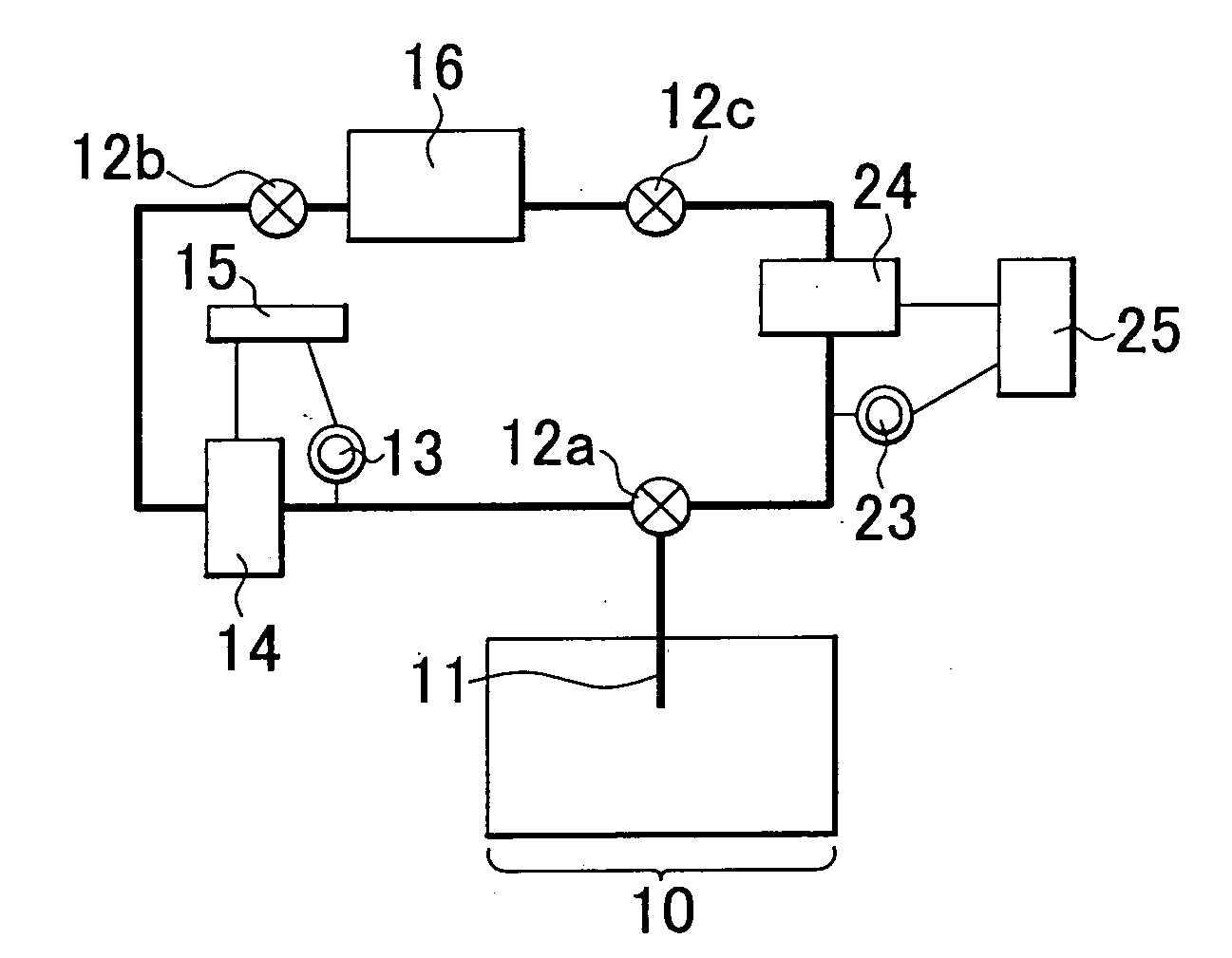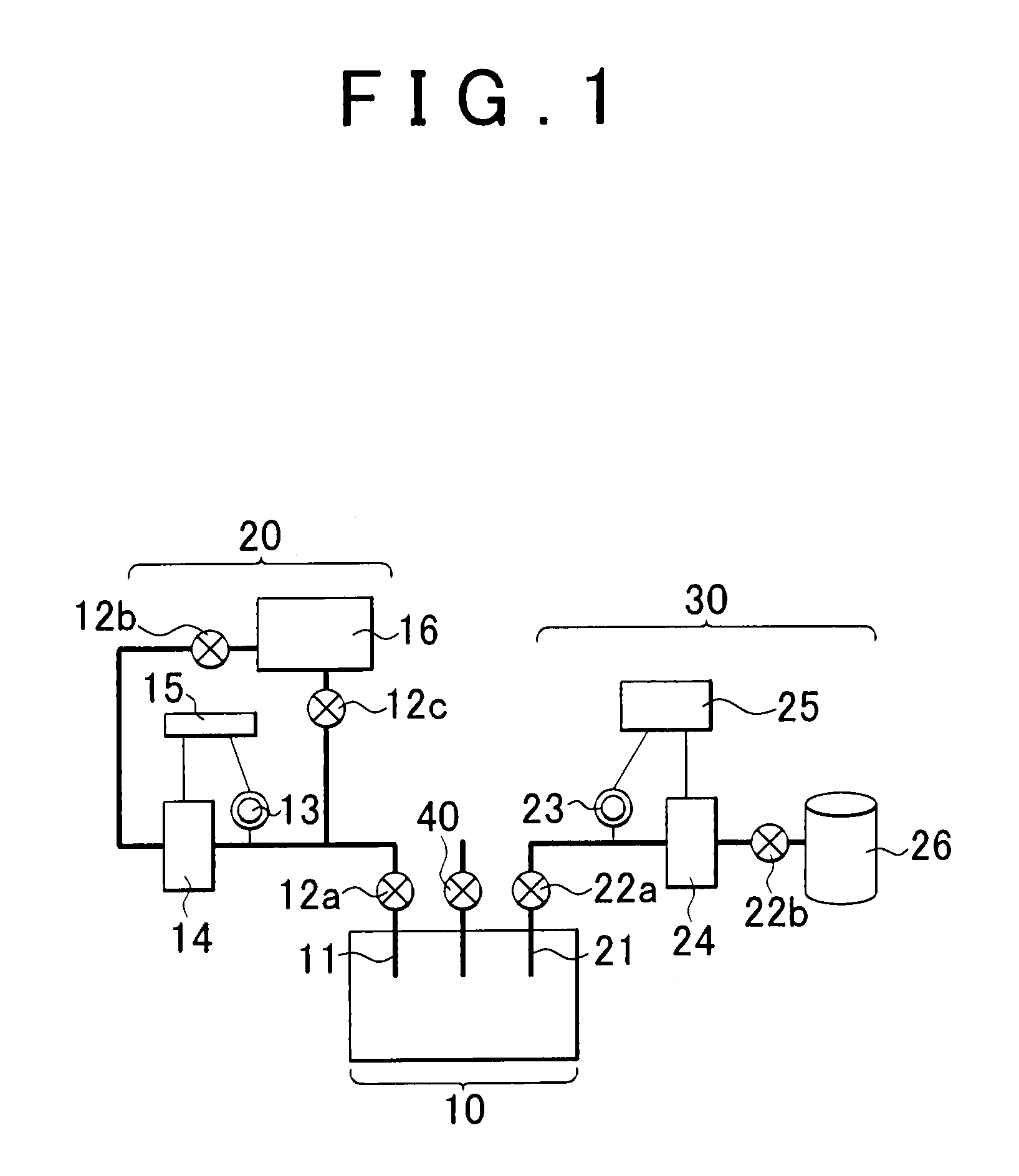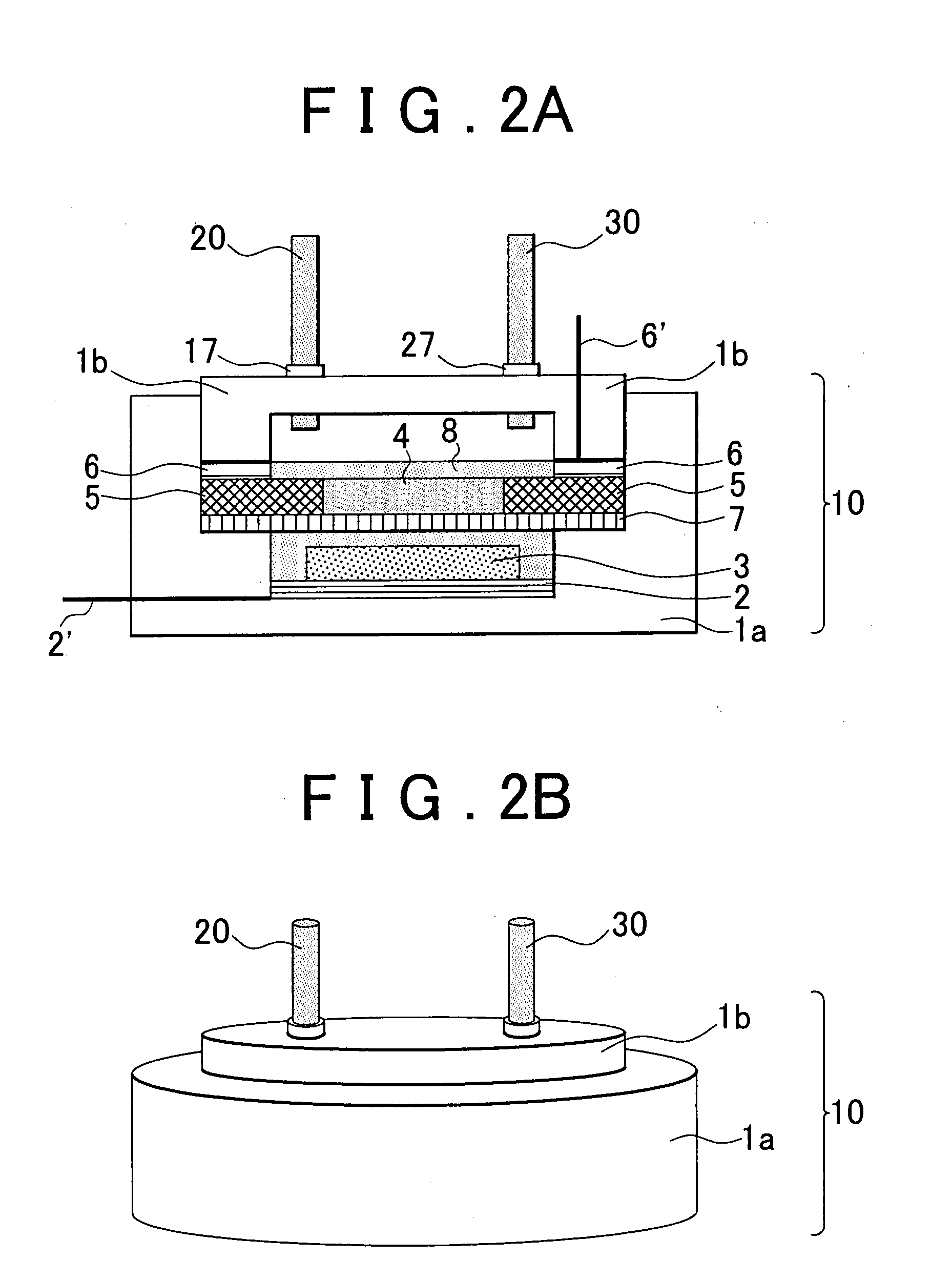Air battery system and methods for using and controlling air battery system
a battery system and air technology, applied in the direction of secondary cells, cell components, cell component details, etc., can solve the problems of air battery deterioration, air battery drawback, electrolyte tends to evaporate easily, etc., to achieve the effect of increasing the internal resistance of the sealed air battery cell and reliably preventing
- Summary
- Abstract
- Description
- Claims
- Application Information
AI Technical Summary
Benefits of technology
Problems solved by technology
Method used
Image
Examples
Embodiment Construction
[0032]Hereinafter, air battery systems and methods for using air battery systems according to example embodiments of the invention will be described in detail.
[0033]First, an air battery system according to an example embodiment of the invention will be described. This air battery system is constituted of a sealed air battery cell and a depressurization portion. The sealed air battery cell has an air electrode, a negative electrode, and a separator provided between the air electrode and the negative electrode. The air electrode has an air electrode layer containing a conductive material and an air electrode power collector for collecting electric power from the air electrode layer, and the negative electrode has a negative electrode layer that adsorbs and releases metal ions and a negative electrode power collector for collecting electric power from the negative electrode layer. The depressurization portion is operable to reduce the internal pressure of the sealed air battery cell d...
PUM
 Login to View More
Login to View More Abstract
Description
Claims
Application Information
 Login to View More
Login to View More - R&D
- Intellectual Property
- Life Sciences
- Materials
- Tech Scout
- Unparalleled Data Quality
- Higher Quality Content
- 60% Fewer Hallucinations
Browse by: Latest US Patents, China's latest patents, Technical Efficacy Thesaurus, Application Domain, Technology Topic, Popular Technical Reports.
© 2025 PatSnap. All rights reserved.Legal|Privacy policy|Modern Slavery Act Transparency Statement|Sitemap|About US| Contact US: help@patsnap.com



